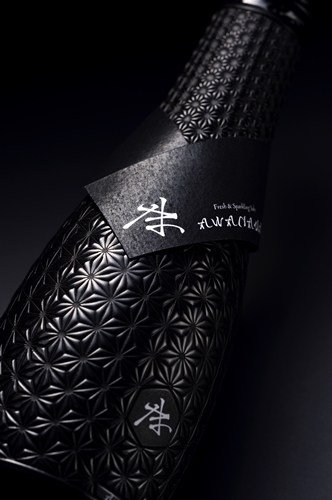DNP Developed Complex PET Bottle Adopted as Japanese Rice Wine Container
Boasts superior light blocking and gas barrier properties
Sep27,2017
A Dai Nippon Printing Co., Ltd. (DNP)-developed complex polyethylene terephthalate (PET) plastic bottle based on functional film that boasts superior light blocking and gas barrier properties, has been adopted for use in the Japanese rice wine Awanama, promoted by the High Pressure Sterilized Draft Sake Consortium.
The consortium, which is represented by Niigata University of Pharmacy and Applied Life Sciences, is engaged in the development of a high pressure sterilization process performed following the injection of the rice wine into the bottle, and in this latest development the flexibility and elasticity of the DNP developed plastic bottle were valued by the consortium leading to its adoption.
Plastic bottles are valued for their lightness and ease of use, and are used for a variety of objectives. Based on The Council for PET Bottle Recycling Guidelines, however, in the Japanese domestic market, coloring the bottle is not recognized, and as a result it has been extremely difficult to use plastic bottles with beverages, such as alcohol, which require light blocking properties in order to prevent a deterioration in the contents.
In rising to this challenge, DNP has developed a complex bottle, whereby a transparent plastic bottle is molded in an integral fashion*1 with a colored film comprising functions such as light blocking properties that envelops the entire bottle. The newly developed product not only includes light blocking and oxygen barrier properties, but is a next generation plastic bottle allowing for expanded design possibilities, such as printing on the surface of the bottle. As the colored film can be separated from the bottle for disposal purposes, the remaining transparent plastic bottle complies with domestic recycling guidelines.
The consortium has subsequently decided to adopt the complex bottle as the container for Awanama, a draft sake.
[High Pressure Sterilized Draft Sake Consortium]
The consortium is an empirical R&D project with a three year life from FY 2016 to FY 2018. Using high pressure technology, the project has developed a technology to facilitate the shipping of draft sake at normal temperatures, without the need for heat treatment. The project aims to develop new demand for Japanese sake, and expand exports.
A high pressure sterilization process is employed during the manufacturing process, making it necessary to use a container with both flexibility and elasticity. The adoption of the DNP developed plastic bottle was based on the fact that it fulfilled two necessary requirements: the need to include light blocking functions that protect the contents, and the presentation of an appealing container design in order to promote sales. The design for the Awanama bottle was created by Frame Inc., headquartered in Niigata City.
DNP joined the consortium in April 2017, which has been adopted as a regional strategic project by the Bio-oriented Technology Research Advancement Institution of the National Agriculture and Food Research Organization.
[Looking Ahead]
DNP will strengthen sales of the complex bottle, aiming for annual sales of 1.0 billion yen in FY 2020.
*1: In a domestic first, in 1997, DNP commercialized an In-line Molding Method allowing for the delivery to beverage factories of a preform test tube-like format, where the beverage has been infused while the preform is inflated. By configuring mini-preforms at beverage plants, transportation efficiency can be improved compared to instances where the bottles are shipped in a final, inflated format, and CO2 emissions reduced. The complex bottle is integrally molded, completely covering the surface of the bottle with a special colored film, boosting light blocking qualities. As of September 2017, approximately one-third of all plastic bottled beverages currently sold in Japan are manufactured with the DNP aseptic filling system.
- Select location
-
- Category
-

